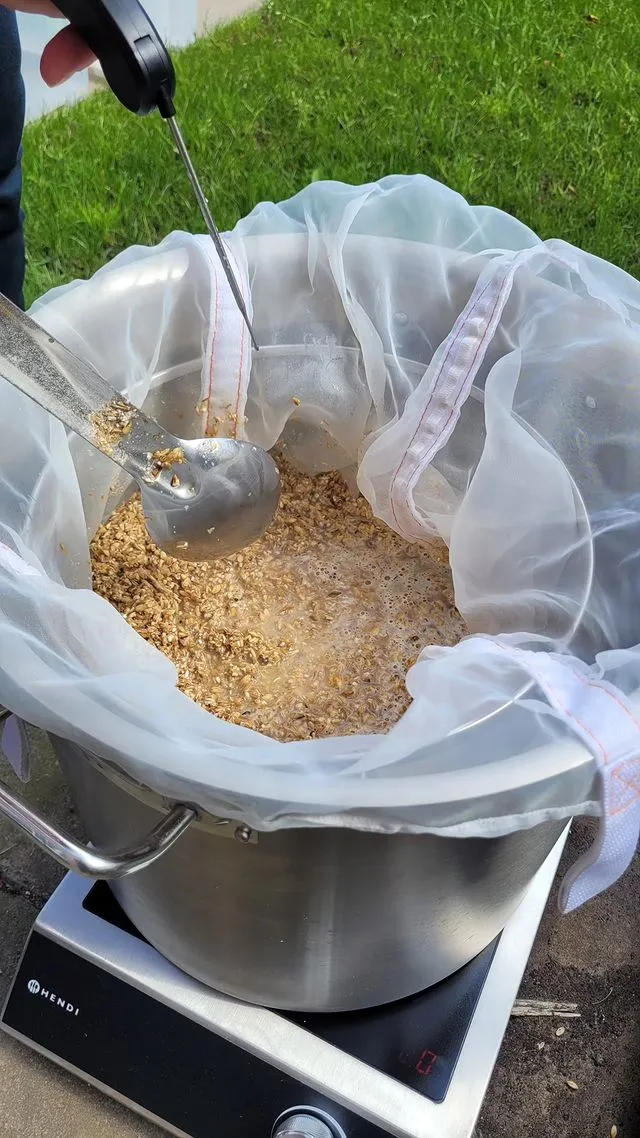When homebrewing beer, one of the critical steps is the boiling of the wort, the liquid extracted from the mashing process of brewing. Many homebrewers notice a significant change in the color of the wort during this phase—it becomes darker. This article will explore the reasons behind this color change, diving into the chemical processes that occur during boiling and their implications for the final beer's flavor and appearance.
Introduction
Homebrewing is both an art and a science, where each step in the brewing process contributes to the final product's character. The boiling step, in particular, plays multiple roles: sterilization of the wort, extraction and isomerization of hops acids, and concentration of the wort. However, an often observed but less understood aspect is the darkening of the wort during boiling. This color change is primarily due to Maillard reactions and caramelization, which we will explore in detail.
Maillard Reactions
What are Maillard Reactions?
Maillard reactions are complex chemical reactions between amino acids (the building blocks of proteins) and reducing sugars (like glucose and maltose). These reactions are not unique to brewing and occur in various cooking processes, such as baking bread and roasting coffee.
How Maillard Reactions Occur in Brewing
In brewing, Maillard reactions begin during the mashing process but significantly intensify during boiling. As the wort is heated, the increased temperature accelerates these reactions, resulting in the formation of melanoidins, which contribute to the darkening of the wort. Melanoidins are high molecular weight compounds and are responsible for the rich brown hues and are also believed to contribute to the flavor stability and mouthfeel of the beer.
Factors Influencing Maillard Reactions
Several factors in the brewing process affect the extent of Maillard reactions:
- Temperature: Higher boiling temperatures increase the reaction rate.
- pH: The slightly acidic environment of the wort can enhance these reactions.
- Duration of Boil: Longer boil times allow more time for these reactions to occur.
- Wort Composition: Higher protein and sugar contents in the wort can lead to more pronounced Maillard reactions.
Caramelization
Understanding Caramelization
Caramelization is the oxidation of sugar in the presence of heat. It is a form of non-enzymatic browning that involves the thermal decomposition of sugars, leading to the formation of new compounds that contribute to color and flavor changes in the wort.
Caramelization in Brewing
During the boil, temperatures can reach points where the simpler sugars in the wort start breaking down and forming complex flavor compounds and darker colors. Unlike Maillard reactions, caramelization is purely sugar-driven and does not involve amino acids.
Impact of Caramelization
The impact of caramelization is closely tied to the intensity and duration of the boil. In brewing, this process not only darkens the wort but also contributes to the sweetness and body of the final beer. Caramelized compounds are generally richer and more aromatic, adding depth to the beer’s flavor profile.
Interplay of Maillard Reactions and Caramelization
While both processes can occur simultaneously, they are distinct in their requirements and outcomes. The Maillard reaction requires amino acids and sugars, while caramelization requires only sugars and more elevated temperatures. In a typical brewing scenario, both processes contribute to color and flavor changes, but the extent and balance between them can vary depending on the specific conditions of the boil.
Implications for Homebrewers
Controlling Wort Color and Flavor
Understanding these processes allows homebrewers to manipulate the color and flavor of their beer more effectively. Adjusting the boil time, the intensity of the boil, and the wort composition can control the extent of Maillard reactions and caramelization.
Practical Tips
- Monitor Boil Intensity: Avoid excessively vigorous boils to control the extent of caramelization.
- Adjust Wort pH: Slight adjustments to the pH can influence the rate and nature of Maillard reactions.
- Experiment with Recipes: Varying the malt types can alter the protein and sugar content in the wort, thus affecting both Maillard reactions and caramelization.
Conclusion
The darkening of wort during boiling is a natural consequence of chemical reactions that occur under the influence of heat. By understanding and controlling these reactions, homebrewers can better manage the color and flavor profile of their brew. Whether aiming for a lighter, subtler taste or a deep, rich flavor, managing the boiling process is key to achieving the desired results in homebrewing.

